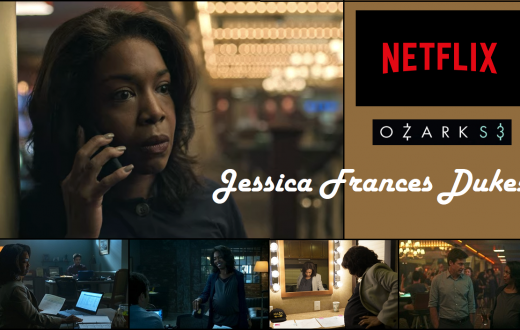Achieving a successful performance hinges on finding the right equilibrium between subtlety and extravagance. Going overboard with either can disconnect the audience or render the portrayal insincere. Actors aiming to deliver captivating performances must master this balance. This guide explores knowing when to turn up the intensity and when to dial it back, providing insights, techniques, and understanding for actors to moderate their performances effectively.
Recognizing the Moments
The first step in mastering the balance between subtlety and extravagance is recognizing the appropriate moments for each. This requires a comprehensive understanding of several key elements: the character, the scene, and the overall tone of the piece.
Understanding the Character
Every character has a unique emotional landscape. By thoroughly understanding your character’s background, motivations, and psychological state, you can determine the appropriate level of intensity. A character who is inherently reserved may require a more subtle approach, whereas a flamboyant personality may naturally lend itself to more extravagant expressions.
Analyzing the Scene
Scenes can vary drastically in tone and intensity. A quiet, intimate moment between two characters will demand a different level of performance compared to a climactic confrontation. Analyze the script carefully, paying attention to the dynamics of each scene, the relationships between characters, and the emotional stakes.
Considering the Medium
The medium of the performance also plays a significant role. Film often requires more subtlety due to the close-up nature of the camera, which can capture the slightest nuance. Theater, on the other hand, might demand more exaggerated expressions and gestures to ensure that the entire audience, including those seated far from the stage, can engage with the performance.
Techniques for Moderating Performances
Once you’ve identified the appropriate moments, the next step is to moderate your performance effectively. Here are some techniques to help you achieve the right balance:
Emotional Memory and Sensory Recall
Using emotional memory and sensory recall can help you bring a reality to your performances. By drawing on your own experiences, you can access genuine emotions that inform your portrayal. This technique allows you to calibrate your performance, making subtle moments more authentic and extravagant moments more grounded.
Physicality and Movement
Physicality is a powerful tool for moderating intensity. Subtle performances often rely on small, controlled movements and minimalistic gestures. Practice reducing your physical expressions to convey emotion through slight changes in posture, facial expressions, or eye movements. For more extravagant moments, you can amplify your gestures and movements, ensuring they remain purposeful and connected to the character’s emotional state.
Vocal Control
In subtle moments, focus on modulating your tone, pitch, and volume to convey emotions. Whispering, soft-spoken dialogue, or a gentle inflection can add layers of meaning to your performance. For more intense scenes, project your voice, vary your pitch dramatically, and experiment with pacing to match the heightened emotions.
Breathing Techniques
Controlled, steady breathing can help you maintain composure and deliver subtlety. In contrast, rapid or deep breathing can heighten emotional tension and prepare you for more extravagant expressions. Practice breath control exercises to develop this skill. Check out the 17 Sacred Breathwork Techniques: A Global Handbook.
Feedback and Rehearsal
Rehearsals are the perfect time to experiment with different levels of intensity and receive constructive criticism. Pay attention to how your performance is perceived and be open to adjustments. This process will help you fine-tune your approach.
When Extravagance is Effective
While subtlety often enhances believability, there are moments when extravagance is not only appropriate but necessary.
Heightened Emotional Peaks
High-stakes scenes, such as moments of intense conflict, deep sorrow, or unbridled joy, often call for extravagant expressions. These are the climactic points in the story where the character’s emotions are at their peak. Allowing yourself to fully embrace these emotions can create a powerful impact on the audience.
Genre Considerations
Some types of storytelling demand larger-than-life performances, with comedy often depending on over-the-top expressions and physicality to provoke laughter. Likewise, genres such as melodrama or fantasy may call for a more dramatic acting style to complement the tone and setting of the narrative.
Unique Character Traits
Some characters are inherently larger-than-life and demand an extravagant portrayal. Think of characters like Willy Wonka, The Joker, or Blanche DuBois (A Streetcar Named Desire). These characters’ distinct personalities and behaviors necessitate a bold and expressive approach to bring them to life authentically.
Stage vs. Screen
As mentioned earlier, the medium influences the level of extravagance. On stage, where the physical distance from the audience can diminish subtle expressions, actors often need to amplify their performances. In film, however, extravagance should be tempered to avoid appearing over-the-top on camera.
When to Dial It Back
Understanding the importance of adjusting the level of intensity is important for delivering a balanced performance. Exaggeration can shatter the sense of realism and distance viewers from the experience.
Intimate and Personal Moments
Intimate scenes, such as private conversations or moments of introspection, often benefit from a more subdued approach. These moments require vulnerability which can be lost in an overly dramatic performance.
Building Tension
Utilizing understated techniques can be remarkably impactful in cultivating suspense. By restraining emotions and letting them stew just beneath the facade, you instill a feeling of expectation and intrigue. This method is especially potent in thrillers or dramas, where viewers eagerly await the release of tension.
Realism and Relatability
For characters and scenes rooted in realism, subtlety is key. Everyday interactions and experiences should feel natural and relatable. By moderating your performance, you ensure that your portrayal resonates with the audience on a personal level.
Ensemble Scenes
Ensemble scenes are where multiple characters share the stage or screen. Balancing your intensity with that of your fellow actors is not an easy task. Overpowering others can disrupt the harmony and detract from the collective storytelling. Practice active listening and responsiveness to maintain cohesion.
Practical Exercises
To help you master the balance between subtlety and extravagance, here are some practical exercises you can incorporate into your training:
Subtlety Exercise: Silent Scenes
Conduct a silent performance, emphasizing non-verbal cues to convey emotions and intentions without using any words. Employ subtle gestures, facial expressions, and eye contact to communicate effectively. This exercise enhances your skill in expressing yourself with nuance and impact.
Extravagance Exercise: Over-the-Top Monologues
Choose a monologue and perform it in the most extravagant manner possible. Embrace exaggerated gestures, vocal variations, and dramatic expressions. Once you’ve fully explored the extreme, gradually scale back the intensity while maintaining the emotional truth. This exercise helps you find the balance between going big and staying authentic.
Partner Exercise: Emotional Mirrors
Pair up with a fellow actor and take turns mirroring each other’s emotions. One actor leads by expressing an emotion subtly, while the other mirrors it. Gradually increase the intensity, exploring both subtle and extravagant expressions. This exercise fosters emotional responsiveness and adaptability.
We hope this guide gives you the understanding of what’s needed to help you grow as an actor!







